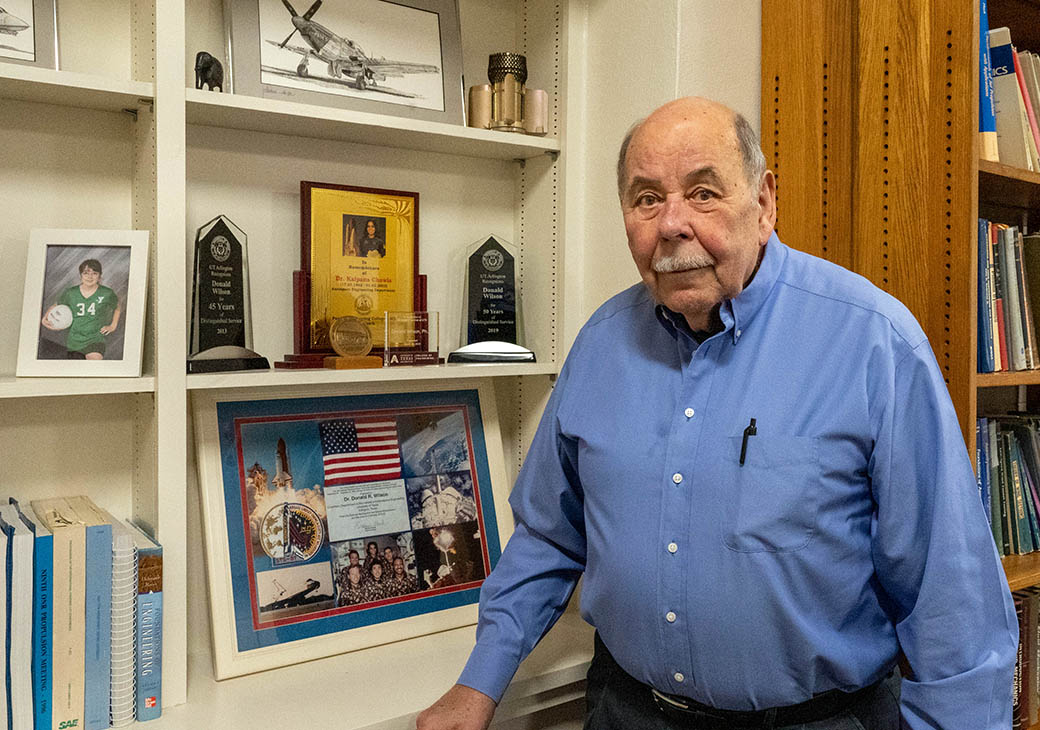The College of Engineering sadly announces that Professor Don Wilson, associate chair of the Department of Mechanical and Aerospace Engineering who served UTA for 55 years, passed away suddenly on April 11.

Memorial services will be held Wednesday, April 19, at Advent Lutheran Church, 3232 S. Cooper St., Arlington.
Wilson had more than 50 years of experience in the fields of gas dynamics, high-speed aerodynamics and propulsion. He joined the faculty at UTA in 1968 as an assistant professor in the Department of Mechanical and Aerospace Engineering. He became a professor in 1983 and served as department chair from 1997-2003.
“Don touched us with his gifts of gentleness, wisdom, and generosity of time, talent and treasure. The only solace, if any, I am hanging on for now, is the grace of continuing the values he treasured most, through our lives,” said Erian Armanios, chair of the Department of Mechanical and Aerospace Engineering.
Wilson established the UTA Aerodynamics Research Center and was involved in the development of its numerous test facilities. He directed the NASA/UTA Center for Hypersonic Research from 1993-97 and also initiated UTA’s detonation wave engine research programs in 1994.
He spent two summers at NASA Lewis (now Glenn) Research Center as a NASA/ASEE Faculty Fellow. He was also actively involved in the NASA/DOE National MHD Power Generator Program. He was awarded the AIAA Ground Testing Award in 2001.
Wilson had the pleasure of serving as faculty advisor to NASA astronaut Kalpana Chawla (M.S.A.E. ’84), who perished in 2003 when the space shuttle Columbia disintegrated on reentry to Earth’s atmosphere, and he was frequently interviewed about her in the following decades.
He earned a Bachelor of Science in aerospace engineering from Georgia Tech, a Master of Science in aerospace engineering from the University of Tennessee and a Doctor of Philosophy in aerospace engineering from UTA.
Before his career in academia, Wilson was involved in the development of electric arc heaters and MHD accelerators for hypersonic wind tunnel applications at the Air Force Arnold Engineering Development Center, and in the development of supersonic aircraft inlets at LTV Aerospace and Defense Company.